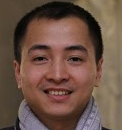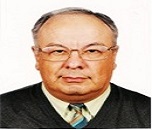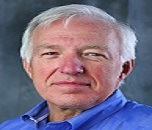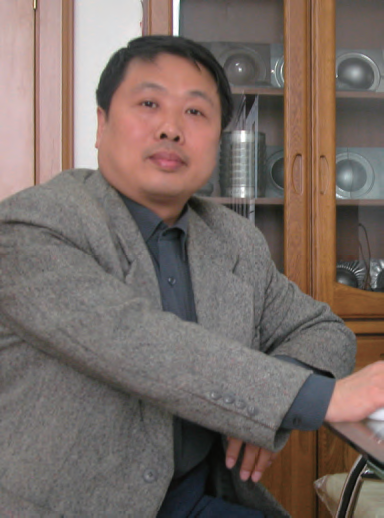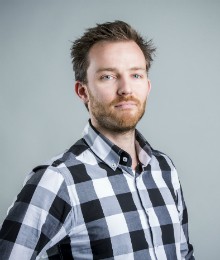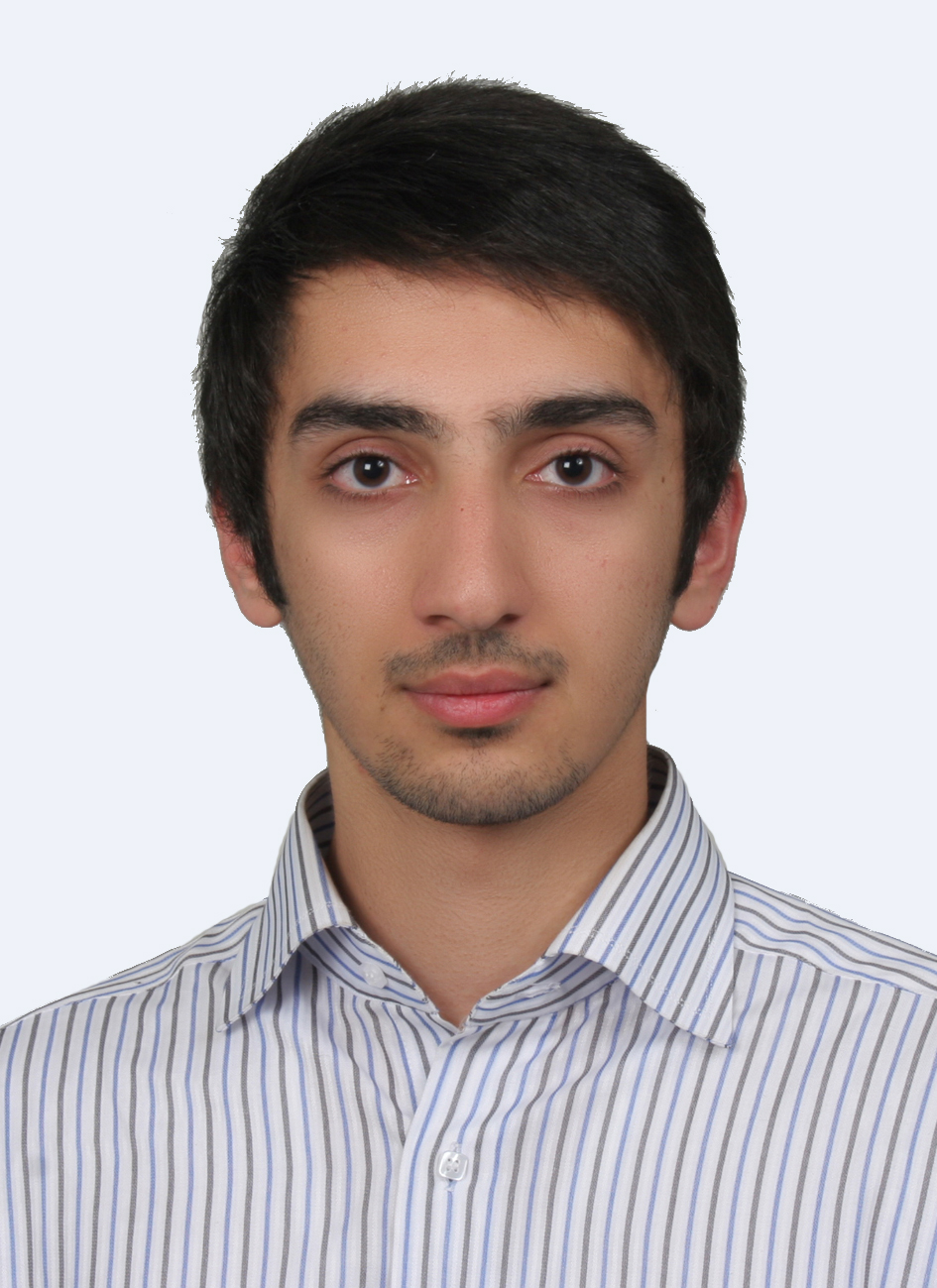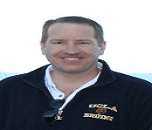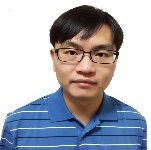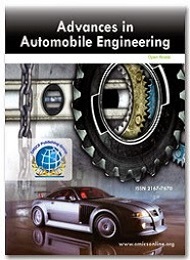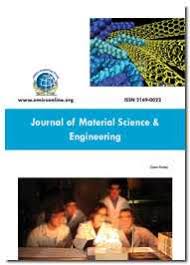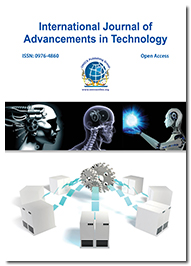Theme: New Engineering Research to Identify the Innovative Solutions
Design Engineering 2019
Design Engineering 2019
On behalf of the Scientific Committee, we are glad to invite all the participants across the globe to attend 4th European Conference on Design and Production Engineering during October 28-29, 2019 at Rome, Italy which includes prompt keynote presentations, Oral talks, Poster presentations, and Exhibitions. Design Engineering 2019 is a specially designed cluster engineering conference. The main theme of this conference is “New Engineering Research to Identify the Innovative Solutions” which covers a wide range of critically important sessions. In the Era of advanced technologies design engineering, seems to be the continuously emerging field with cutting-edge research technologies.
4th European Conference on Design and Production Engineering will cover issues on advancement in the various field of engineering and will provide a unique forum for the publication of innovative research on the development of alternative sustainable technologies. Design Engineering 2019 is a uniquely planned cluster of a program that gives a familiar platform where industry meets academia to consider the recent issues and happening. It works as a link among researchers of academia and industry improved by its well established scientific sessions, inclusive lectures, poster presentations, world-class exhibitions, distinct symposiums, highly fortified workshops, and B2B meetings. Also encourages an immeasurable understanding of the technological developments and scientific improvements across the world by simultaneously associating with the step of science, technology and business areas in the field of Design and Production Engineering.
Why to Attend?
In today’s scenario, technology is transforming day by day and various industries, Research organizations and governments are consuming a lot of money on Research & Development to draw new innovations to the world. All the countries are not practicing the same technology, they have their own R&D. All these variations we cannot put them in the books and teach to the world. Design Engineering 2019 will lead together experts, researchers, scholars, and students from all areas of Mechanical engineering this includes Design engineering, Production engineering, Vehicle engineering, Manufacture engineering, Mechatronics and other related areas such as Bio-inspired robotics, Prosthetic design, and Bio-inspired design. Avail the Opportunity to haunt the presentations addressed by eminent scientists, researchers, experts from all over the globe. Participate in concourses on specific topics on which the conference is presumed to achieve progress. Acquire Global networking in conveying and exchanging Ideas. Share your enthusiasm in promoting new ideas, advancements, and innovations in the field of Design & Production engineering.
Target Audience:
-
Design Engineers
-
Mechanical engineers
-
Industrial engineers
-
Aerospace engineers
-
Materials engineers
-
Scientists
-
Students
-
Professors
-
Industrialists
Scope And Importance:
Industrial and production engineers use principles of engineering, production and technology to assist corporations to realize ways that to supply services or produce a product expeditiously. Industrial engineers work to enhance merchandise through higher management and internal control. production engineering may be a combination of producing technology, engineering sciences with management science. A production engineer generally contains wide information on engineering practices and is responsive to the management challenges associated with production. The goal is to accomplish the assembly method within the smoothest, most-judicious and most-economic means. Production engineering encompasses the appliance of castings, machining process, change of integrity processes, metal cutting & tool style, metrology, machine tools, machining systems, automation, jigs and fixtures, die and mildew style, material science, style of automobile elements, and machine coming up with and producing. Production engineering additionally overlaps considerably with producing engineering and applied science. The names square measure typically interchangeable.
Because fashionable technology is thus advanced, it's currently close to regarding not possible for a personal to handle style and development of a brand new product single headedly. It takes a team of designers and engineers to with success manufacture a brand new product. so as to attain success, the planning method should be planned fastidiously and dead consistently. Specifically, the engineering style method should integrate the numerous completely different aspects of coming up with in such the way that the complete method becomes logical and explicable. additionally, most of the CAD / CAE code accessible nowadays is advanced. It takes special coaching to know and utilize the harness the $64000 power of those applications. Secondly, the price of exploit these tools is quite pricey. several firms that require to develop product thus source their engineering style needs to agencies that give such services. There also are times once the corporate has trained personnel and smart CAD / CAE infrastructure, however the folks operating there ar merely overladen with work. In such cases too, firms avail engineering style services to share their work load after they ar arduous ironed for time.
Track 1: Design Engineering
Design Engineering is the combination of design thinking, practice and engineering thinking within a culture of innovation and enterprise. Design engineers analysis and develop ideas for brand spanking new entities and also the systems accustomed create them. They additionally work to boost the performance and potency of prevailing merchandise. Design Engineer develops the product concept and specifications and might direct the design effort. It is the process of devising a system, component to meet desired requirements. The process by which the above goals are achieved is called engineering design.
-
Computer aided designing (CAD)
-
Design automation
Track 2: Manufacturing Process
The manufacturing process is the science of converting raw materials into finished products which include designing and manufacturing of products using different methods and techniques. It is also termed as manufacturing technology to produce a specific product with innovation management science along with an application of cost control techniques. The planning and control of the manufacturing processes, plant, and equipment are involved in the production of any manufactured product. Product Design and Development require a broad knowledge of engineering practices and should be well aware of the management challenge which differs from material research to machinery development and technology related to production. Each part or component of a product must be designed to not only meet design requirements and speciï¬cations but also to be manufactured economically and with relative ease.
-
Fabrication
-
Agile manufacturing
Track 3: Automobile Engineering
This is a stream of mechanical engineering. In accord with several types of automobiles, their operation and execution. It includes the advancement of the transmission system. This deals with the modification of engine and vehicle. The study involves different stages of manufacturing from concept to production stage which includes fabricating, design, develop, and testing vehicles or vehicle components. It includes three field production, development, and manufacturing. Basically, all the types of automotive works on internal combustion engines and the process are internal combustion. Different types of fuels are used for combustion inside the cylinder at the higher temperature to get the transmission motion in the vehicles.
-
DSG (dual shift gearbox)
-
Ford intelligent transmission
-
SAT (satellite-aided transmission)
-
HFT (Honda human-friendly transmission)
-
Dual mass fly wheel
-
Zero shift transmission
-
AMT automated manual transmission
-
Kinetic energy regeneration
-
FCEV Fuel cell electric vehicles
-
Hydrogen powered vehicles
-
Biofuel engines
Track 4: Production Engineering
It is also termed as manufacturing technology to produce a specific product with innovation management science for the application of cost control techniques. The planning and control of the manufacturing processes, plant, and equipment involved in the production of any manufactured product. Product Design and Development has a broad knowledge of engineering practices and is well aware of the management challenge which differs from material research to machinery development, Nanotechnology related to production.
-
Production engineering solutions
-
Economics of Production
-
Rapid Manufacturing
-
Agile manufacturing
Track 5: Machine Tool Operation
Machine tool operation is machinists who use lathes, milling machines, grinders, CNC machining centres and other machine tools to cut metal into accurate shapes and sizes. Throughout and later the machining operations, machine tool operators use precision measuring instruments, such as micrometres and gauges, to inspect and make sure the parts are machined to the specifications required.
Track 6: Medical Engineering
Medical engineering is the multidisciplinary subject which utilizes building standards and procedures to the therapeutic field. This field looks to close the hole among designing and prescription. It joins the Principles and critical thinking abilities to build with therapeutic and organic sciences to improve human services determination and treatment. A Biomedical Engineering prompts great comprehension of a few innovative perspectives that incorporate Electronics, Mechanics, IT and Computer Science which can be connected in the therapeutic field and social insurance frameworks like determination and restorative instrument advancement. Its further division incorporates Bio-mechanics, Medical Devices Designing, Bioinformatics, Bio-materials, Pharmaceutical building and Tissue - Genetic Engineering.
-
Brain-Machine Interfaces
-
Cancer Nanotherapy
-
Medical devices Designing
Track 7: Product and Process Engineering
Product Engineering or Software Product engineering comprises of the process of innovating, designing, developing, testing and deploying a software product. Product engineering is the entire product life cycle from the innovation phase, starting from the idea being conceived to the deployment and user acceptance testing phase. The evolving product lifecycle elements such as reducing product development times, increasing expectations on quality, manufacturing process optimization and design cost pressures. The increasing demand for enriching user experience also places more emphasis on cutting edge product engineering solutions. Process engineering involves selection of the processes to be used, determination of the sequence of all operations, and requisition of special tools to make a product.
-
Process design engineering
-
Product design engineering
-
Product development engineering
-
Power station design
Track 8: Advanced Technology
Advanced technology aims in developing the efficiency of operation, operating performance, life expectancy, reliability and to decrease the cost of the components. To accomplish this, we make the surface robust to the environment in which it will be used. It involves Plating technologies, Nano and emerging technologies and Surface engineering, characterization and testing. To be effective with present technology, the utilities must be considered as a whole, combining intelligence with physical infrastructure. If the sources are thought of as a holistic function they can be extended into the wide-ranging ground that is required to support so many other technologies that have become conventionalized in our everyday lives.
-
Kinematics of Machines
-
Computational Fluid Dynamics (CFD)
-
Dynamic design
-
Trends in advanced machining, manufacturing and materials
-
Thermal structures and windmills
Track 9: Material Science
Materials science is fundamentally concerned with the search for elementary knowledge about the internal structure, properties, and processing of materials including the study of the properties between the processing, properties, synthesis, structure, and materials that promote an engineering purpose. Mechanical Engineering’s and material researchers work closely together with the goal of tailoring. The peculiarities of interest can be mechanical, electrical, magnetic or optical. Material may be chosen based on various applications but they all relate to properties. The engineering function
-
Polymers and composites
-
Powder metallurgy
-
Micromanufacturing
-
Materials and alloys
Track 10: Industrial design
Industrial design is a concerned art whereby the aesthetics and usability of mass-produced commodities may be developed for marketability and production. The purpose of an Industrial Designer is to build and execute design solutions towards enigmas of form, usability, user ergonomics, engineering, marketing, brand development and sales. Industrial Design is involved with all the human features of machine-made products and their relationship to people and the environment. Industrial design is the adept service of designing and developing ideas and specifications that optimize the function, utility and features of products and systems for the joint benefit of both consumer and manufacturer.
Track 11: Structural engineering
Structural engineering is a discipline of engineering dealing with the study and design of structures that hold or resist loads. Structural engineering is usually considered stream within civil engineering, but it can also be crammed in its own right Structural Engineer Structural engineers analyze, design, plan, and research structural elements and structural systems to accomplish design goals and assure the safety and convenience of users or residents. Their work takes account essentially of safety, technical, economic and environmental concerns, but they may also include aesthetic and social factors. Structural engineering specialities for buildings cover various aspect Earthquake engineering, Façade engineering, Fire engineering, Roof engineering, Tower engineering, Wind engineering, civil engineering structures.
-
Structural designing
Track 12: Molecular engineering
Molecular engineering is an evolving field of study related to the design and testing of molecular structure, properties, behaviour, and interactions in order to construct better substances, systems, and processes for specific roles. A modern approach known as the bottom-up design is used in which observable properties of a macroscopic system are influenced by direct alteration of a molecular structure. Molecular engineering deals with material advancement efforts in emerging technologies that need dogmatic rational molecular design strategy towards systems of immense complexity.
Molecular engineering is profoundly interdisciplinary by nature, incorporating aspects of biotechnological engineering, chemical engineering, mechanical engineering, materials science, electrical engineering, physics, and chemistry. There is also significant overlap with nanotechnology, in that both are concerned with the behaviour of materials on the scale of nanometers or smaller. Given the extremely fundamental nature of molecular interactions, there is a surplus of potential application areas, defined perhaps only by one’s imagination and the laws of physics. However, some of the early achievements of molecular engineering have evolved in the fields of immunotherapy, drug designing, synthetic biology, and printable electronics.
-
Genome Editing
Track 13: Aerospace engineering
Aerospace engineering is the division of engineering that involves aircraft, spacecraft, and associated topics. Incipiently called aeronautical engineering and dealing solely with aircraft, the broader term "aerospace engineering" has displaced the former in most usage, as flight technology developed to include craft operating outside Earth's atmosphere, Manages and coordinates the design, assembling, and examination of aircraft and aerospace commodities
Aerospace engineering also Evaluates schemes for projects to determine if they are technically and financially feasible, Determines if proposed projects will result in safe aircraft and parts and Evaluate designs to see that the products reach engineering principles, customer demands, and environmental challenges. It also creates approval criteria for design processes, quality standards, sustainment after delivery and finish dates.
-
Airship design and development
Track 14: Agriculture engineering
Agriculture engineering involves the implementation of engineering concepts for the advancement of agricultural tools and techniques which result in technological advancement in farming. Agricultural Engineering is the area of engineering concerned with the construction, design, and improvement of farming equipment. Agricultural engineers also called as biological and agricultural engineers work on various aspect like aquaculture, land farming, horticulture, forestry and developing biofuels to improving conservation. It also includes planning animal environments to finding better ways to process food. It helps agricultural and food scientists create biological applications for developing crops with new, sturdier traits. Now a day’s agriculture engineering is also heavily involved in efforts to produce new forms of biomass, including algae, for power generation.
-
Drip and Sprinkler Irrigation Technology
-
Greenhouses Cultivation
-
Precision Agriculture Technology
-
Tissue culture
-
Hybrid crops
-
Genetically modified crops
Track 15: Textile engineering
Textile engineering contains the ideologies and scientific techniques which are utilized for development and designing the textile fabrics and substitutes. It also includes the study of principles of science that deals with the analysis of polymers involved in the formation of textile fibre. Textile is defined as any fibre having flexibility, fineness, tensile strength, the minimum length of 10 mm and proper orientation.
-
Fibre science
Track 16: weapon designing
Weapons engineers are the specialists tasked with designing, dynamics, developing and testing a country's military hardware and weapon systems. Military weapons designers create anything of rifles and grenades to tanks, missiles and satellite-controlled defence systems. Most have experiences in mechanical engineering. The weapons engineering capacity elongates within warheads and explosive, mounting and control, delivery systems and fusing and guidance from rockets through to gun systems. Researchers are also active in less lethal technologies and their applications.
-
Advance weapon system
-
Military drones
-
Modular Advanced Armed Robotic System (MAARS)
-
TASER Shockwave
-
Magneto Hydrodynamic Explosive Munition (MAHEM)
-
Laser Weapon System (LaWS)
Track 17: Metallurgical engineering
Metallurgical engineering is the study of various aspect of metal and their uses. It includes modification of various properties of metals. The aspects currently focused in the field of metallurgy are semiconductor, nanomaterial, composite and advanced materials which can be considered as stepping stones to many sophisticated technologies. This field is focused to find new ways to use metal in machinery and for other industrial uses.
-
Arterial science
-
Alloys
-
Castings of metals and alloys
-
Strength of materials
Track18: Robotics
Robotics is the branch of engineering where people work with the development and design of robots. Robotics includes the various aspect of engineerings like electronics, computer science, artificial intelligence, mechatronics, nanotechnology and bioengineering. Robotics is the branch that typically differs from others as it closes the loop between perception and action in a dynamic physical environment. Robotics is employed to develop machines that can substitute for humans and replicate human actions which are robots. Robots can be utilised in many places and for lots of purposes, but today numerous are practised in manufacturing processes, dangerous environments, or where humans cannot sustain.
The field of robotics has exceedingly advanced with various new global technological achievements. One is the emergence of big data, which gives more possibility to build programming ability into robotic systems. Added is the practice of new varieties of sensors and connected devices to monitor environmental aspects like light, temperature, motion, air pressure and more. All of this assists robotics and the creation of more elaborated and advanced robots for numerous uses, including humanitarian assistance, health and safety, and manufacturing.
-
Mechatronics
-
Micro electro mechanical system
-
Microrobots
-
Human-robot interaction
Glance at Market Analysis of Design & Production Engineering
Market in Europe
Monetary development has been solid and adjusted in 2017, and is anticipated to direct yet stay hearty in 2019 and past. Be that as it may, in structure and generation Automotive is a key division of the Italian economy, as it represents 10% of the Italian business segments offer of GDP and about 9% of work. Italy the 0ne of the biggest vehicle maker in Europe, after Germany, and positions higher internationally. Nine unique hardware makers (OEM) are dynamic in Italy with an aggregate of 17 generation plants. The car part makers worldwide are Italian organizations, with great execution in Europe, Asia and the NAFTA area. Car is Spain's 2ndlargest fare industry with over 85% of the national creation traded.
A considerable percentage of the vehicles are made in Italy are transported abroad to 130 nations. A huge number of organizations having a place with 720 pioneering bunches are situated in Italy, giving a quick and modified support of assembling plants. In 2015, the Italian car part performed well, as creation and limit utilization came back to pre-emergency levels. Italian plan and vehicle creation expanded 12% to more than 2.7 million units. Car sends out expanded 11.4% by units and 18% by esteem, to EUR 31.7 million. This rise proceeded in 2016, with residential vehicle generation expanding 11.2% year-on-year in first 50% of 2016, to more than 1.6 million units, as per the Italian vehicle structuring and creation affiliation. The standpoint for 2018 stays considerate, with development in accordance with the Italian economy and yield of in excess of 3 million units anticipated.
Italy has a profoundly propelled aviation plan and creation industry that offers brilliant open doors for remote organizations. Deals came to an expected USD 10.7 billion out of 2015 and the division utilizes in excess of 54,000 specialists. It is portrayed by fast development as of late and noteworthy interest in R&D, up to 10.5% of turnover in air transportation and 12% in space.
Market over the World Statistics of CAE:
Worldwide PC supported designing business sector remained at $ 5.04 billion out of 2016, and is required to develop at a CAGR of 7.52% to reach $ 7.79 billion by 2022, on the back of expanding interest for development and unrivaled quality items from over the globe, high consumption on aviation and guard area, rising mechanical headways and developing requirement for application-explicit PC helped building (CAE) programming. The Computer Aided Engineering market demonstrate a 11.1% compound yearly development rate (CAGR) for the following five years, adding up to a market estimation of $5,863.36 million by 2021. This development mirrors an expanded dependence on CAE apparatuses crosswise over segments, for example, the car, aviation, guard and medicinal gadget ventures. The blast of the tech period has introduced new requests for designing organizations to deliver better, less expensive gadgets and to turn them around quicker.
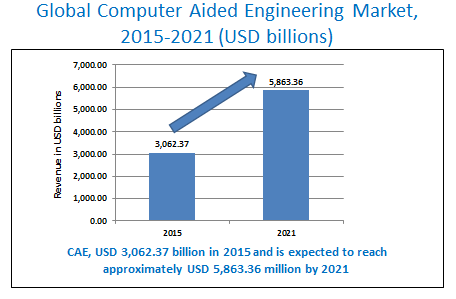
Statistics of Automotive Industry:
All around, the planning and creation of vehicle industry has recuperated from the financial emergency. Industry benefits in 2012 (EUR 54 billion) were a lot higher than in 2007 (EUR 41 billion), a definitive pre emergency year, and the investigation for future development is stunningly better. By methods for 2020, worldwide benefits could increment by another EUR 25 billion, to EUR 79 billion. The worldwide car apply autonomy showcase represented USD 4.34 billion out of 2016 and is required to develop at a CAGR of 13.9% from 2017 to 2025 to reach $13.6 billion. The expanding adjustment of robotization and apply autonomy in the car business is a main consideration expected to drive the market development.
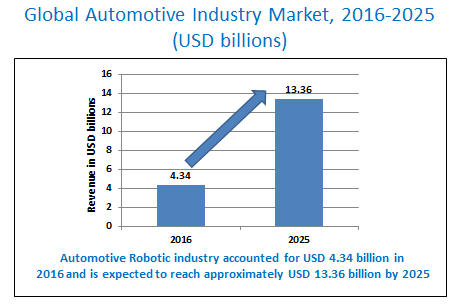
Statistics of Aerospace Robotics:
Mechanical upsets and activities taken by the legislature with respect to plan and creation of mechanization of assembling segments help the offers of car robots. The administration are giving expense exclusions to R&D and giving tax reduction which will diminish the expense of assembling and improve the assembling openings in the nations instead of going for seaward assembling. Items offered by different organizations inside the aviation mechanical technology showcase have been recorded in the report. The ongoing improvements area of the report incorporates later and critical advancements by various organizations among 2013 and 2016. Principle organizations profiled inside the report comprise of KUKA AG (Germany), FANUC Corporation (Japan), ABB Group (Switzerland), Yukawa Electric Corporation (Japan), and Kawasaki Heavy Industries, Ltd. (Japan), among others. Extensions represented the first offer of in general development systems embraced by the main players in the aviation mechanical technology showcase. The aviation mechanical technology commercial center is anticipated to develop from USD 1.81 Billion of every 2016 to USD 4.54 Billion by 2022, at a CAGR of 16.55% eventually of the figure term. Expanding utilization of robots for proficient airplane generation, creating utilization of mechanical technology to deal with air ship request overabundances, and expanding work costs are factors driving the aviation apply autonomy showcase. The topographical assessment of the aviation mechanical technology showcase comprises of zones, which incorporate North America, Europe, Asia-Pacific, and the remainder of the world. North America is evaluated to represent the biggest offer of the aviation apply autonomy showcase in 2016. Nearness of significant air ship producers and flying machine part makers in North America is the purpose for the area's expansive piece of the pie. The expanding interest for business air ship has made air ship makers swing to robots and modern computerization to build their month to month generation. Verbalized robot showcase size will represent over 35% offer by methods for 2024 because of its expansion use in material dealing with, welding, material expulsion and administering. The welding application portion holds the biggest offer of car apply autonomy showcase in 2016 and is relied upon to reach over USD 5 billion by 2025.

Related conferences
-
29th CIRP DESIGN 2019 OPEN DESIGN And DESIGN AS EXPONENTIAL TECHNOLOGY, 08th to 10th May 2019, Portugal
-
20th World Congress on Materials Science and Engineering, June 24-26, 2019, Vienna, Austria
-
6th International Conference and Exhibition on Automobile & Mechanical Engineering, July 08-09, 2019, Zurich, Switzerland
-
7th International Conference and Expo on Automobile Engineering & Design, July 12-13, 2019, Yokohama, Japan;
-
4th International Conference on Design and Manufacturing Engineering, July 15-17, 2019, Geelong, Australia
-
International Association of Societies of Design Research (IASDR) Conference, September 02-05 2019, UK
-
20th International Conference and Exhibition on Materials Science and Engineering, September 16-17, 2019, Amsterdam, Netherlands;
-
7th International Conference and Exhibition on Mechanical & Aerospace Engineering, September 20-21, 2019 San Francisco, USA
-
31st European Congress on Nanotechnology and Materials Engineering, October 3-4, 2019, Paris, France
-
Amuse UX Conference, October 16-18, 2019 Budapest, Romania
-
32nd Materials Science and Engineering Conference: Advancement & Innovations, October 24-25, 2019, Helsinki, Finland
-
6th International Conference on Steel Structure and Engineering, November 14th-15th, 2019, Tokyo, Japan
Related Societies and Association
USA Region
-
American Association of Engineering Societies
-
American Indian Council of Architects and Engineers
-
American Indian Science and Engineering Society
-
American Institute of Aeronautics and Astronautics
-
American Institute of Chemical Engineers
-
American Nuclear Society
-
American Railway Engineering Association
-
American Society for Engineering Education
-
American Society of Agricultural and Biological Engineers
-
American Society of Civil Engineers
-
American Society of Heating, Refrigerating and Air-Conditioning Engineers
-
American Society of Mechanical Engineers
-
American Society of Naval Engineers
-
American Academy of Environmental Engineers
Europe Region
-
European Federation of National Engineering Associations
-
European Association for Structural Dynamics
-
European Society for Engineering Education
-
Association Française de Mécanique
-
Technical Chamber of Greece
-
Institution of Engineers of Ireland
-
Institute of Physics and Engineering in Medicine
-
Verein Deutscher Ingenieure
-
Chamber of Electrical Engineers of Turkey
-
Union of Chambers of Turkish engineers and architects
-
British Institute of Non-Destructive Testing
-
Chartered Institution of Building Services Engineers
-
Chartered Institution of Highways and Transportation
-
Institute of Cast Metals Engineers
-
Institute of Highway Engineers
-
Institute of Healthcare Engineering and Estate Management
-
Institute of Marine Engineering, Science and Technology
Asia Region
-
Aeronautical Society of India
-
Computer Society of India
-
The Institution of Engineers (India)
-
Institution of Electronics and Telecommunication Engineers
-
Indian Institute of Chemical Engineers
-
Indian Institution of Industrial Engineering
-
Society of EMC Engineers (India)
-
Indian Society for Technical Education
-
Indian Science Congress Association
-
Japan Society of Civil Engineers
-
Japanese Union of Scientists and Engineers
-
Philippine Institute of Civil Engineers
-
Society of Naval Architects and Marine Engineers
-
Institute of Electronics Engineers of the Philippines
-
Institution of Engineers, Sri Lanka
-
Institution of Incorporated Engineers, Sri Lanka
Conference Highlights
- Design Engineering
- Metallurgical Engineering
- Production Engineering
- Automobile Engineering
- Weapon Designing
- Advanced Technology
- Material Science
- Product and Process Engineering
- Robotics
- Manufacturing Process
- Structural engineering
- Molecular engineering
- Aerospace engineering
- Agriculture Engineering
- Textile Engineering
- Industrial design
- Medical Engineering
- Machine Tool Operation
To share your views and research, please click here to register for the Conference.
To Collaborate Scientific Professionals around the World
| Conference Date | October 28-29, 2019 | ||
| Sponsors & Exhibitors |
|
||
| Speaker Opportunity Closed | |||
| Poster Opportunity Closed | Click Here to View | ||
Useful Links
Special Issues
All accepted abstracts will be published in respective Our International Journals.
- Journal of Applied Mechanical Engineering
- Industrial Engineering & Management
- International Journal of Advancements in Technology
Abstracts will be provided with Digital Object Identifier by





